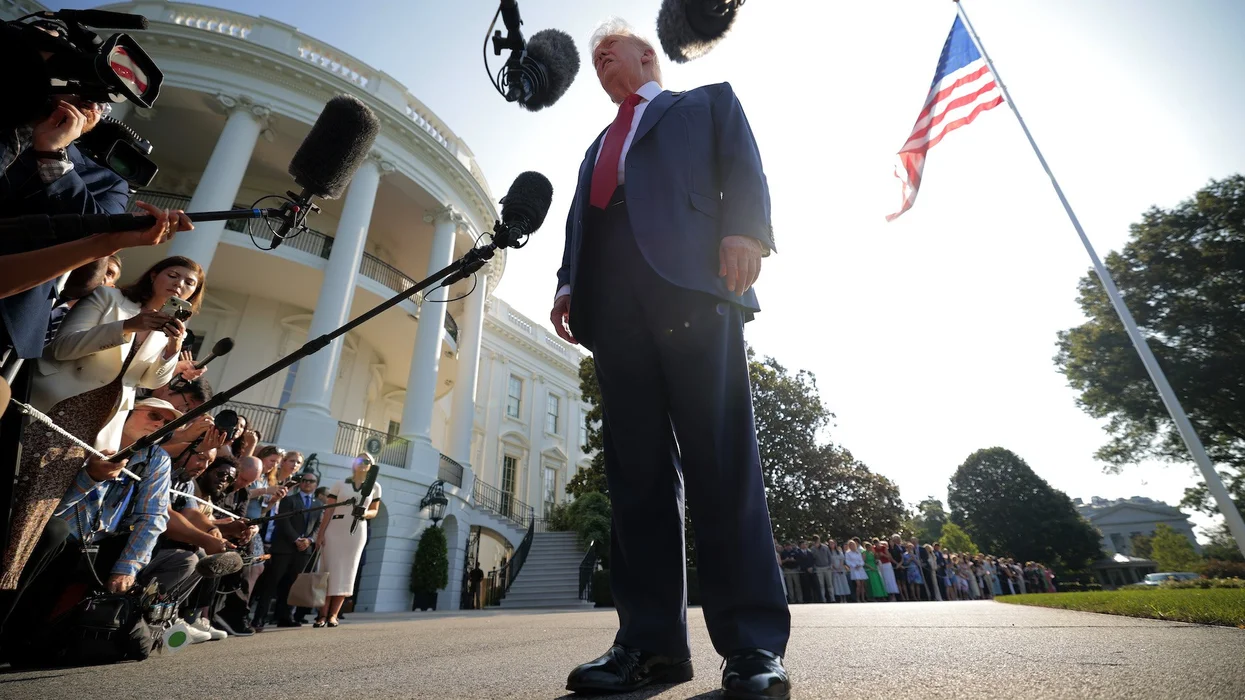
© 2025 Blaze Media LLC. All rights reserved.
Two Giant Data Centers in Manhattan Have Been Hidden in Plain Sight for Nearly 100 Years
June 26, 2014
Two buildings with a lot of history.
While skyscrapers, residential buildings and other construction has come and gone in the blocks around them, two buildings in New York City have essentially hidden in plain sight and maintained their status as camouflaged communication nerve centers for nearly 100 years.
 The two buildings have existed as telecommunication nerve centers for nearly 100 years (Image source: Vimeo)
The two buildings have existed as telecommunication nerve centers for nearly 100 years (Image source: Vimeo)
The two unique skyscrapers were built in Lower Manhattan between 1928 and 1932 to house the telecommunications infrastructure for Western Union and AT&T. And almost a full century later both towers, designed by architect Ralph Walker, are still fulfilling their original intentions as massive data centers.
 Both buildings were designed to enable long-distance communication, and still meet that need today (Image source: Vimeo).
Both buildings were designed to enable long-distance communication, and still meet that need today (Image source: Vimeo).
 The original architecture that has supported shifting telecommunication infrastructure needs proves that as much as we change, long-range communication still requires some grand spaces (Image source: Vimeo).
The original architecture that has supported shifting telecommunication infrastructure needs proves that as much as we change, long-range communication still requires some grand spaces (Image source: Vimeo).
Their Art Deco style create a sense of drama in the early 20th century, to reinforce the changing tide of long-distance communication. But in recent decades, their artful design has done more to hide the buildings in plain sight than draw attention to their mission.
The new film Urban Giants goes inside these towers that now serve Telx, an internet services company, to highlight the history of global telecommunications. According to Gizmodo:
"'A hundred million telegrams will pass through this building,' the signage proclaimed outside Western Union's building when it was under construction, a gasp-inducing fact. But New York City was also undergoing a telephone revolution—there were more telephones being installed here than anywhere else on the planet—and the buildings also represented a commitment to this changing technology."
To meet this shifting demand for telephone access in the bustling 1930s, the Walker's buildings required advances in construction to contain the hulking, new infrastructure. Behind the ornate detail, foundations were reinforced to support the heavy equipment, and the street-facing designs were meant to impress -- telecommunication companies might prefer to blend in now, but at the time the buildings were meant to be symbols of an impending shift in the people share information.
"Walker could bring to these commissions a kind of subtlety and surface texture ... and that was enormously important to the success of these buildings,"Carol Willis, Founding Director, The Skyscraper Museum, said. "The communicated far away and up close."
Just like the cables and fibers running through the bowels of the buildings have done for nearly ten decades.
Walker, who also designed the Barclay-Vesey Telephone Building (now known as the Verizon Building) was fortuitous in his vision. The longevity of these buildings prove that as advanced as our telecommunications systems get, they still require much of the same supporting infrastructure.
The telegraph lines in the Western Union building included a network of pneumatic tubes which would shuffle the telegrams around the building. Walker's design was incredibly fortuitous: the large, thick tubes are perfect for holding the bundled fiberoptic cables that current internet service travels upon, making the buildings easy to retrofit as present-day data centers for Telx.
A portion of the film Urban Giants can be seen here.
(H/T: Gizmodo)
--
Follow Elizabeth Kreft (@elizabethakreft) on Twitter.
Want to leave a tip?
We answer to you. Help keep our content free of advertisers and big tech censorship by leaving a tip today.
Want to join the conversation?
Already a subscriber?
more stories
Sign up for the Blaze newsletter
By signing up, you agree to our Privacy Policy and Terms of Use, and agree to receive content that may sometimes include advertisements. You may opt out at any time.
Related Content
© 2025 Blaze Media LLC. All rights reserved.
Get the stories that matter most delivered directly to your inbox.
By signing up, you agree to our Privacy Policy and Terms of Use, and agree to receive content that may sometimes include advertisements. You may opt out at any time.





